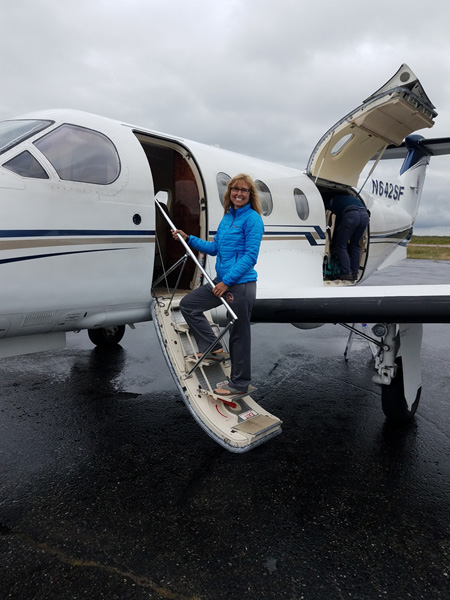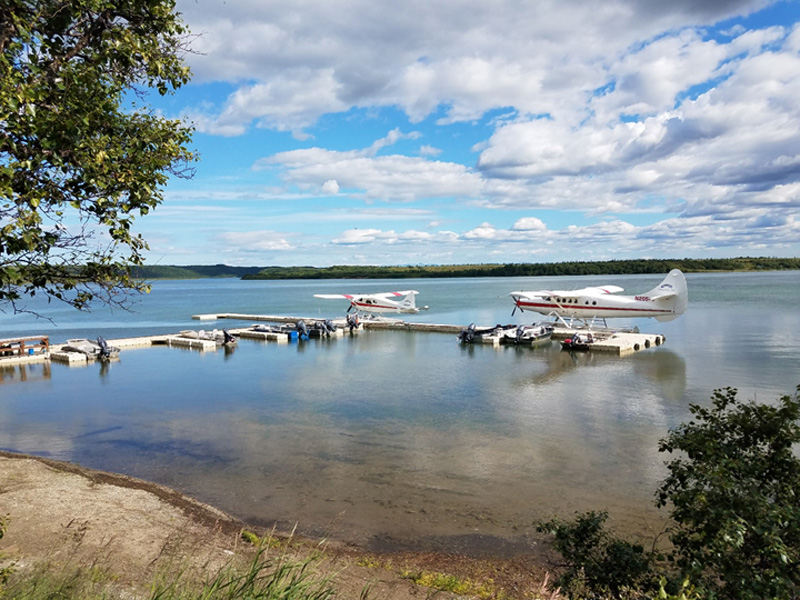
Sitting down at my computer and sifting through emails can be a daunting chore. I have 5 different addresses to go through. But on one particular morning back in July, I had a surprise waiting in one of my inboxes. It was an invitation from Deneki Outdoorsto travel to Alaska and be a guest at Rapids Camp Lodge in King Salmon, talk tenkara and fish. The idea was to teach the method, explain the set up and work with guides on landing big fish. Without even thinking I immediately responded, “Yes!” and spent the next 24 hours figuring out flights, arranging my absence and doing a little research on Alaskan Trout and Salmon fishing. Just what had I agreed to do on a tenkara rod?
I had been pushing the boundaries of this method all year long with big browns in Patagonia, Shark and Tarpon in the Florida Keys and Bonefish in Mexico, but salmon – Silvers, Chum, Sockeyes and King were massive, powerful, huge fish that hit hard, bolted, fought and ran like the wind. Was this even possible? I guess we were about to find out in 2 weeks…and besides, I had never been to Alaska.
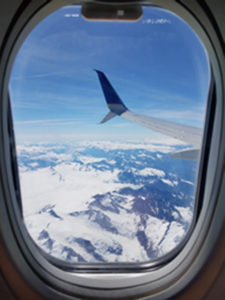 I booked a direct flight from Denver to Anchorage then another short flight into King Salmon. Rapids Camp Lodgeis conveniently located about 10 miles from the airport yet provides the distinct feeling of being isolated and away from development. Although, after touring King Salmon, with Eddies Fireplace Innand Ace Hardware as its highlights, isolation was no issue. Driving down a mostly paved road for 15 minutes, we arrived in time to settle in, do a little exploring, have a cocktail, then enjoy a sumptuous dinner followed by a debriefing for the next day. It was early evening, but I soon found out that 8pm would feel like 2pm for the rest of the trip, and at 11pm I’d have to fight the urge to “get up and do something” because my circadian rhythm and the almost perpetual sunlight would be whispering in my head to go out and play. Ear plugs and an eye mask proved to be extremely helpful.
I booked a direct flight from Denver to Anchorage then another short flight into King Salmon. Rapids Camp Lodgeis conveniently located about 10 miles from the airport yet provides the distinct feeling of being isolated and away from development. Although, after touring King Salmon, with Eddies Fireplace Innand Ace Hardware as its highlights, isolation was no issue. Driving down a mostly paved road for 15 minutes, we arrived in time to settle in, do a little exploring, have a cocktail, then enjoy a sumptuous dinner followed by a debriefing for the next day. It was early evening, but I soon found out that 8pm would feel like 2pm for the rest of the trip, and at 11pm I’d have to fight the urge to “get up and do something” because my circadian rhythm and the almost perpetual sunlight would be whispering in my head to go out and play. Ear plugs and an eye mask proved to be extremely helpful.
After dinner on the first night we cast rods in the courtyard, and I showed off my wares to all the guides. Even the chef and pilot were interested and curious to cast the rods with no reel. Those two eternal questions that I always get when I talk tenkara, were posed again, “How do you land the fish?” and “What happens when they run?” My response is always the same, “We’ll find out tomorrow, won’t we?” And that’s how my Alaskan tenkara adventure began.
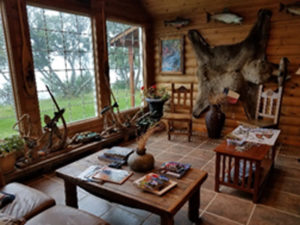 The mornings were chilly, damp and foggy. That meant flying out on the Beaver float planewould be reserved for after lunch and the day would start on the Naknek River by boat, scouting for circling birds and surface busts which meant fish were feeding on schools of Smelt. To add to the options, Sockeyes were pumping up the edge of the river and cruising Kings and Silvers were occasionally taunting us too. I was in fishing heaven. We set up a Zen Sagi Rod which is a 13.6ft, 7:3 soft flex made of the highest quality carbon fiber available. That means the rod is not only extremely light and super strong, but it bends and flexes like the yogi practitioner I dream of being. That flex acts as your built-in drag system which would be severely tested during this Alaskan expedition.
The mornings were chilly, damp and foggy. That meant flying out on the Beaver float planewould be reserved for after lunch and the day would start on the Naknek River by boat, scouting for circling birds and surface busts which meant fish were feeding on schools of Smelt. To add to the options, Sockeyes were pumping up the edge of the river and cruising Kings and Silvers were occasionally taunting us too. I was in fishing heaven. We set up a Zen Sagi Rod which is a 13.6ft, 7:3 soft flex made of the highest quality carbon fiber available. That means the rod is not only extremely light and super strong, but it bends and flexes like the yogi practitioner I dream of being. That flex acts as your built-in drag system which would be severely tested during this Alaskan expedition.
Most mornings we set up with a 25-30ft, 8wt floating line and used a size 6 articulated streamer that imitated a Smelt. Some days we used obnoxiously bright colors and literally pissed fish off so that they’d take the fly out of annoyance verses hunger. We’d search for birds, then watch for busts on the surface while standing ready at the bow or stern of the boat, nerves on end, poised to cast at frenzied feeding fish making their way up stream. It was like popcorn in a river full of hot oil. You stood watching, waiting and anticipating in this case, hungry fish instead of kernels, exploding in the water. My heart was pounding and I kept having to release my grip on the rod and consciously relax my hand. The closest thrill I had had to this was casting to shark in the Florida Keys into chummed waters as I stood on the open bow of a flats boat only 3ft off the water. Only this time I wasn’t worried about being eaten. Ready to throw line at any minute in any direction, I hoped I could tempt the fish to take my fly as I pulsed it with my rod parallel to the water into the middle of the ravenous chaos.
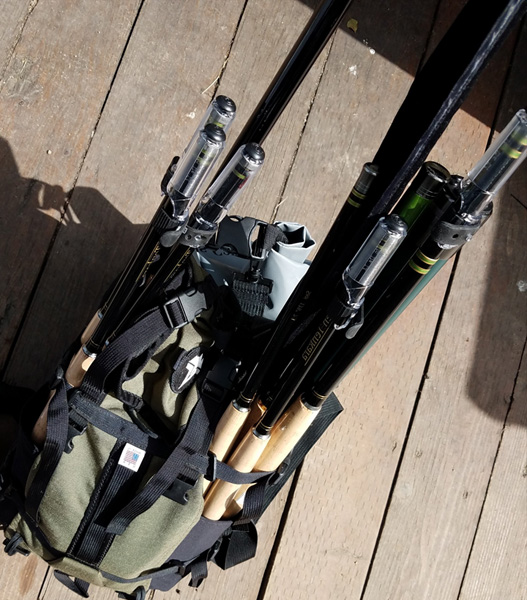
I’ll admit, on the tenkara rod, there were busts I missed… I simply could not adjust my line length to the distance I sometimes needed to cast to. Whether it was too close or too far, I had to wait until the bust came to me. Was that frustrating? Did I feel disappointed? Was tenkara a failure? No, I didn’t, and no it wasn’t. I had plenty of opportunities and was able to fully participate in the fish boil. My friend was casting off the stern of the boat with a regular fly rod and reel set-up. He landed about the same number of fish. He cast at some that were out of my reach, but I cast at some that he missed while too busy trying to hit targets 65ft away. Truth is, if the timing is right and you’re in the middle of a river full of busting fish, just by the sheer numbers, you’re gonna have plenty of targets that are in range. The issue wasn’t whether I could reach fish, it was whether I could land the beasts.
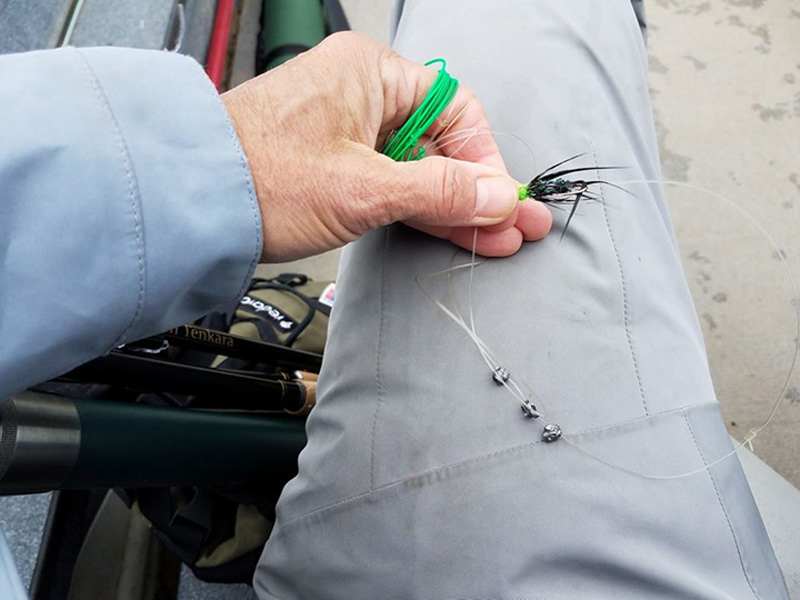
I found out, it was possible. Easier in the water than out though, because I had more options for movement. In fact, I kinda went A-Wall after losing a couple and decided the next fish-on, was going to stick. After casting and moving the fly across the water with a gentle but consistent pulse, I hooked up and when it ran, I jumped…jumped right out of the boat and into the water. Admittedly I freaked Kyle, the guide, out. Completely. And I promised to never do it again (but I landed the fish and was all smiles.)
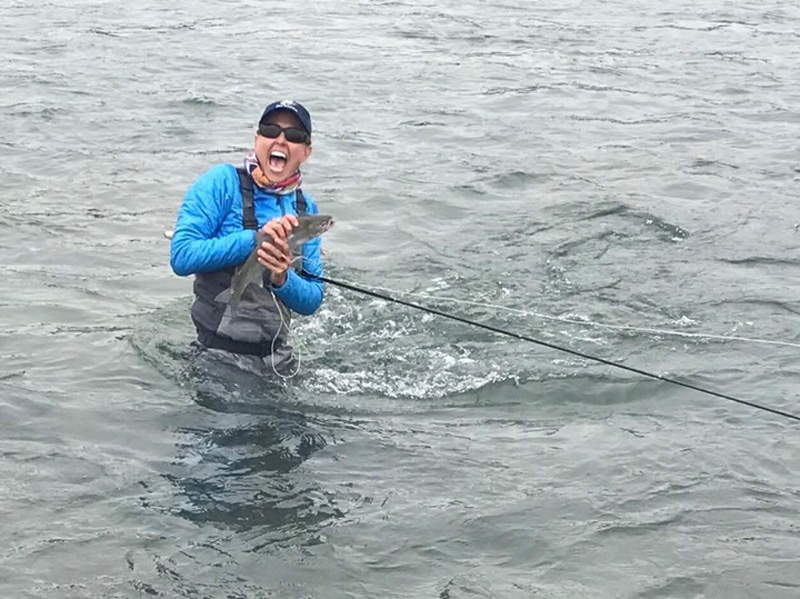
Over the course of the week we fished for Rainbows, Grayling, Char, Chum, Sockeye, Silvers and had a few opportunities to cast to Kings. The Sockeye, while being crazy strong and even crazier fast, were an absolute hoot to fish for. Once we dialed in the 40lb test we needed to keep them from breaking the line, they were landed successfully. To stand on the bank and watch hundreds of thousands of fish continually pump up the sides of the river was mind blowing. It was prefect on a fixed-line too. They hug the bank as the cruise about 10ft off shore along the edge of the rocks. They do this with their mouths open and feed on plankton while they swim. Sockeye don’t chase flies, instead you use a sinking line with lots of split shots to get it down quickly. The hook (because sometimes we actually used a naked hook) trails about 3ft under the weights and lays out in the water about 1 foot off the bottom. As the fish pump through, you literally snag them and set the hook in the corner of their mouth. Then, you hold on like you’re about to ride a rocket, because these fish blast off like nothing I’ve ever felt. It was thrilling to say the least. A 10wt intermediate sinking line fit the bill perfectly on the Sagi. The line was about 8ft long with about 4ft of 40lb Maxima.
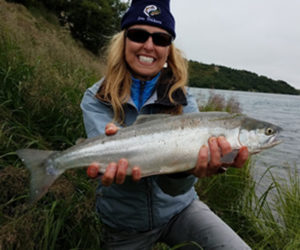
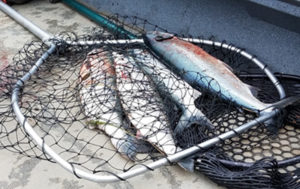
We spent several days in the Katmai National Park on Grosvenor Lake and hiked back to pristine creeks that held monster fish. It was breathtakingly beautiful and although we opted to skip flying to the famous Brooks Camp Falls to fish and bear watch, we were spoiled with places like Contact Creek where fish were hooked literally every cast and we had to abandon honey holes to hungry Brown bears that lumbered up and down the river totally apathetic to us or our lost fish when lines were cut in order to retreat.
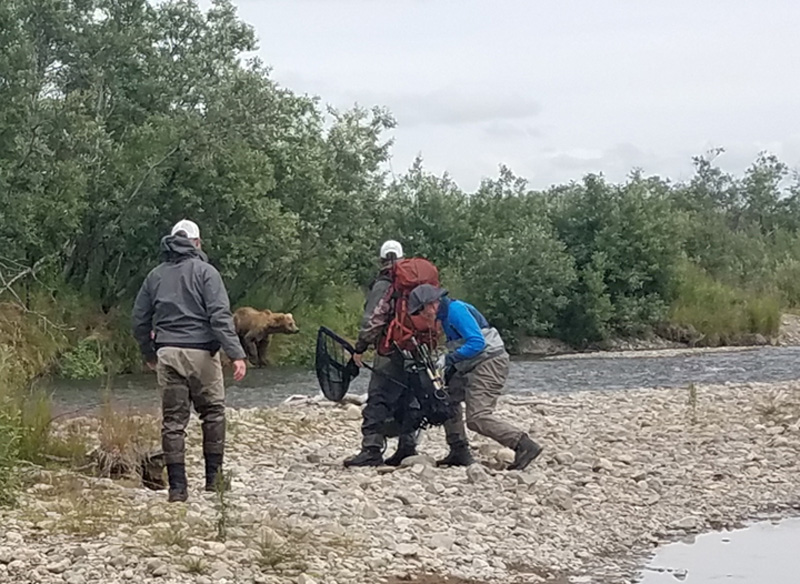
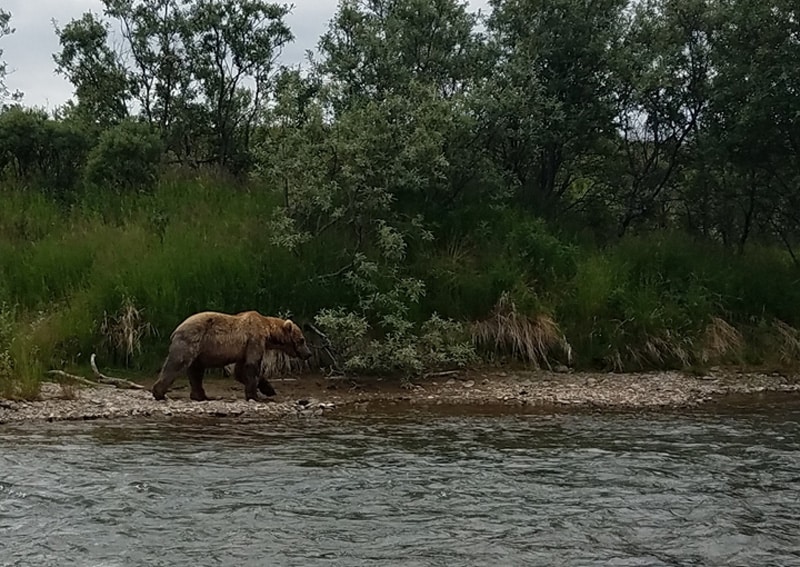
That day was particularly special not because of the bears, but because of the fish that were perpetually offered up by the river. Massive Chum that would hunker down and refuse to move, Dolly Varden and Char, thick and beefy in that fish sort-of-way. I could have stayed there forever. The tenkara rod performed magically. I moved and had gravel shoreline from which to maneuver from. The water was no more than 4ft deep and usually much shallower. I’d cast up stream and lift the rod tip higher as the fly came closer and in front of me, then let it back out doing a small ticking motion. This action took the place of stripping and bringing line in that you would normally do with a reel. The method worked great.
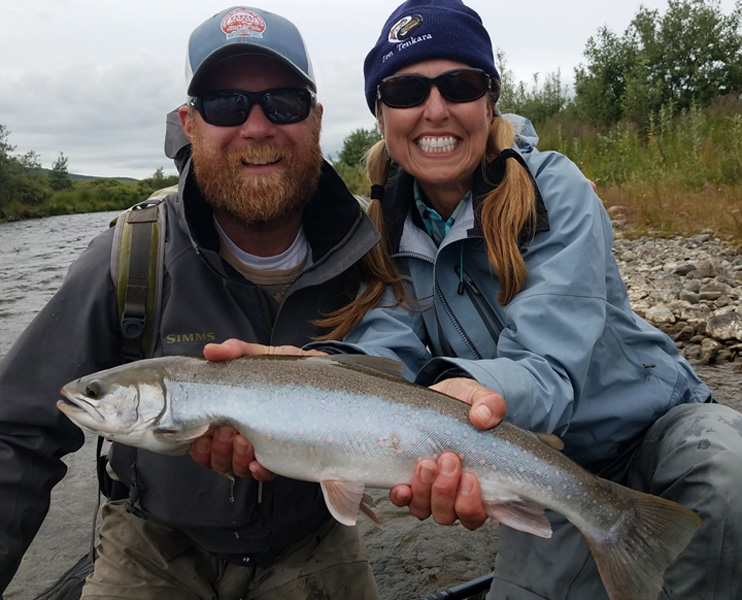
On that day we also learned a cardinal rule for landing big, 15 -20lb+ fish on tenkara, don’t grab the line to pull them in, no matter how tempting. Work the fish into position, then with your net partner ready, lift away and bring the rod up, lifting the fish’s head while the guide nets it. This method worked exceptionally well and once we stopped grabbing the line, no fish were lost.
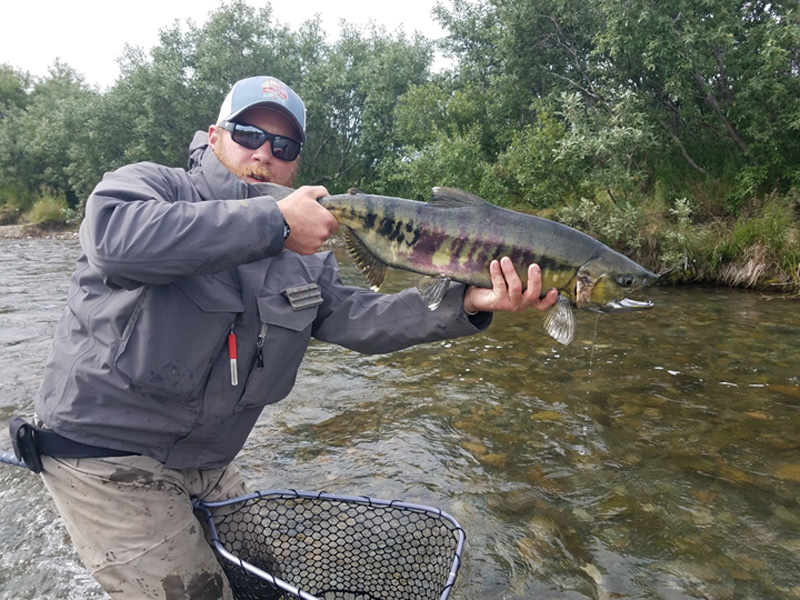
On a different afternoon, we flew to the Ugashik Lake and fished the Narrows for Grayling after Grayling on tenkara. These were fun, beautiful fish that weren’t as huge as the salmon but fought hard, jumped and did acrobatics that reminded me of trout back home in Colorado. Each day after lunch when the fog lifted and the weather cleared, we had a whole new adventure waiting for us and were flown to the most spectacular, remote areas. That alone was a thrill and offered breathtaking views of glaciers, rivers and wilderness that few eyes get to behold. We even flew over a herd of Beluga whales. Simply wondrous.
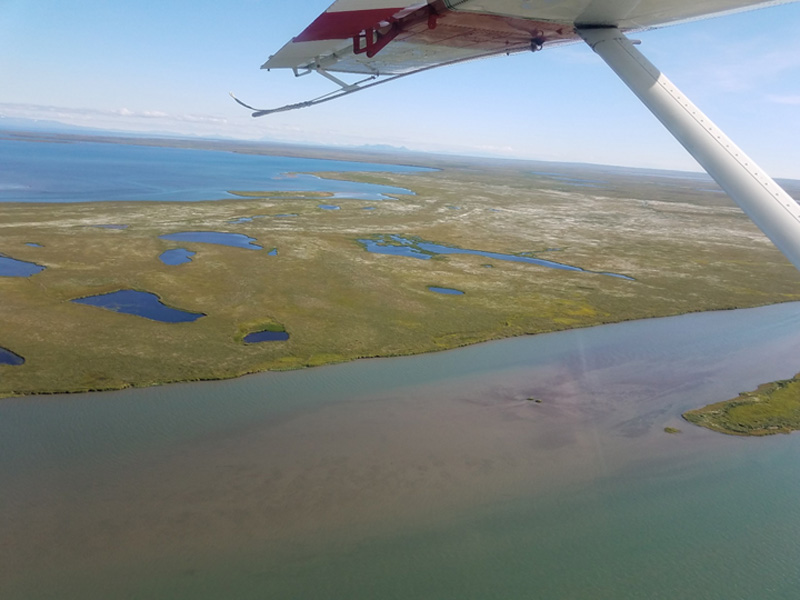
I could really go on and on because each day at Rapids Camp Lodge the staff were well prepared and ready to get us into fish, whether on a reel or a fixed tenkara line. They were willing to experiment and learn along side of me. They played with the rods, cast and got into fish to feel and experience the landing process for themselves. I loved that they were open, adventurous, ready to problem solve and think creatively. Each day they were as amazed as I was, at what the rods could do and how Alaskan beasts could be tamed and netted in a new, fun and seriously thrilling way. Each time we landed a monster there was an incredible urge to “chest bump” and embrace in high-fives. You worked together with your guide and became partners celebrating the catch and landing with all out pride.
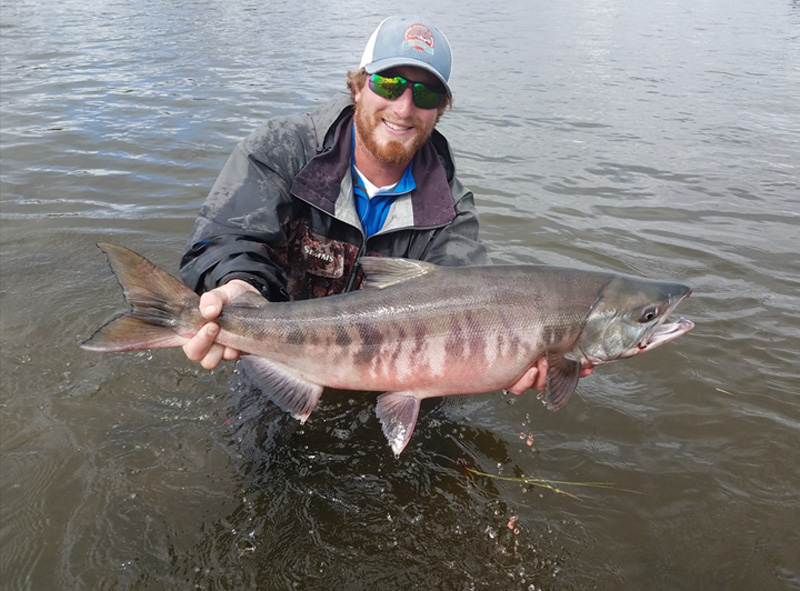
So how do you land a 20lb+ Salmon and manage not to lose them when they run? We’re back to those two eternally asked questions. First and foremost, you better have a rod that can handle the load and was designed for big, no I mean BIG, fish. A 5-10lb fish is small in Alaska. We used the Zen Sagiand a proto-type Zen rod designed to flex and carry the stress of big, aggressive fish. Know and understand your rod flex intimately. I immediately feel when my rod is in its ultimate flexed position or arch. Rob Worthington coined the term, “power curve.” I think of it much more extreme than a curve. It’s a deep, continual bend in the rod, one that extends the full length of the rod, right into the handle. This creates a large arch. I work from a plain parallel to the water rather than hold the rod perpendicular to the surface, or worse, behind me where I can no longer see or manage my bend, increasing the probability of snapping the upper sections.
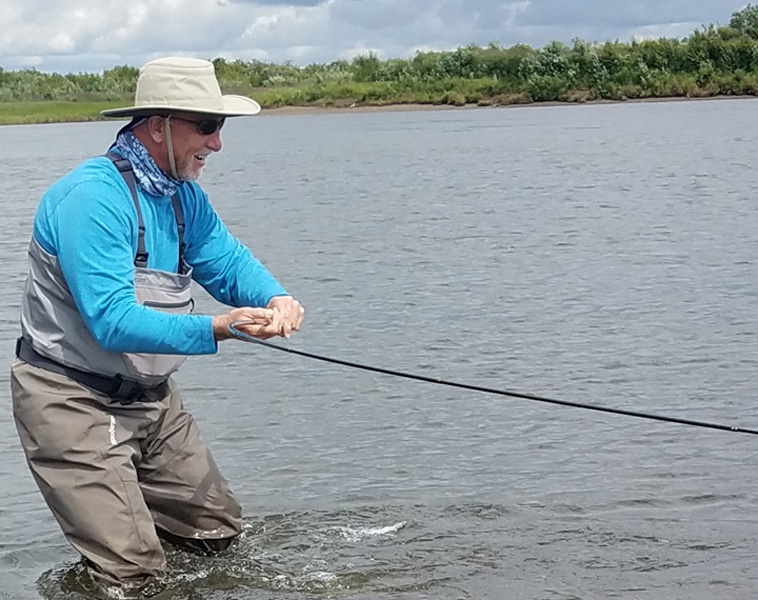
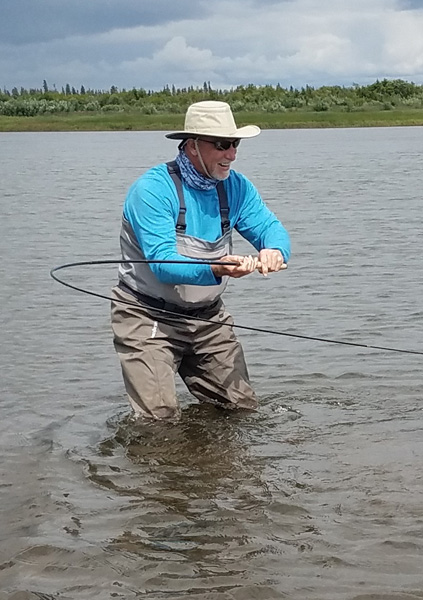
I prefer to work like this from the side. I can manage my rod bend and see the fish simultaneously. I also have more control over steering the fish and work continually to maintain a deep arch. Once that arch is achieved I work it in a 180 degree angle from the surface of the water on my left, to the surface of the water on my right. And generally, my most vulnerable position is straight up at 90 degrees. At this position I am limited with where I can go, how high I can reach, and how far back my arm can go. I no longer can see my rod so I have no idea if I’m nearing a break, and the fish literally now has 360 degrees of possible movement on a long line. From a sideway vantage point, I can move forward or backward and can rotate the fish completely around while always maintaining the “ultimate flex position” of the rod which is its strongest position, flipping my rod carefully to the left or to the right in response to the fish’s effort to throw the hook or prepared to run. In this position I can maintain a two handed grip on the handle easily and comfortable, pulling back with my upper hand and pushing forward with my lower. I can change the fish’s direction and control where the fish goes, until the last moment when we go to net. Interesting, I could anticipate, by feel, when the fish would attempt to the throw hook or run, and each movement that transferred up the rod and directly into my hands felt very different. I could tell the guide to move away, remove the net or stand clear because the fish was about to bolt or attempt to release hook. It was incredible to be able to predict what the fish was about to do. This is the connection tenkara and fixed-line fishing provide you. And this is what makes me so passionate.
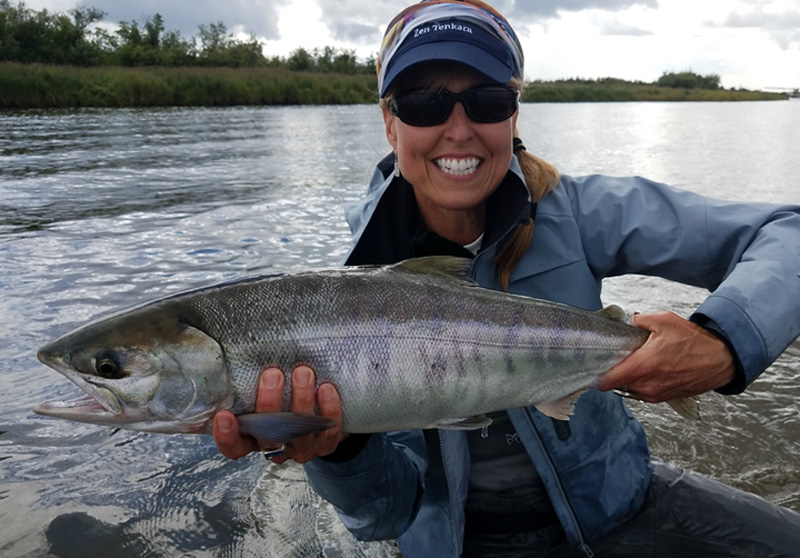
Once in the arch, stay on your feet, ever ready to move. Know where you want to take the beast… You should have previously scouted the water and have a general plan. Your goal is to get to an area of water that’s shallow enough for you to move through, but not so shallow that is causes your fish to freak. If their belly starts to hit the ground they will panic and try to rocket into deeper, safer water. This can make landing the fish more difficult and increases the chance he’ll run. Be prepared, sometimes you’ll need to become a ‘human reel.’ If you lose your arch, even for a moment, or if he’s enormous, he will run and you will become the drag, and will need to move with the fish to regain control and work to steer and turn him back into position. Once this happens, you are moving quickly to get back into the ultimate flexed position of your rod, the power arch, and maintain control. But, hear this, you cannot be stationary and successful. Moving is key. To see what it looks like, check out a bit of video here:
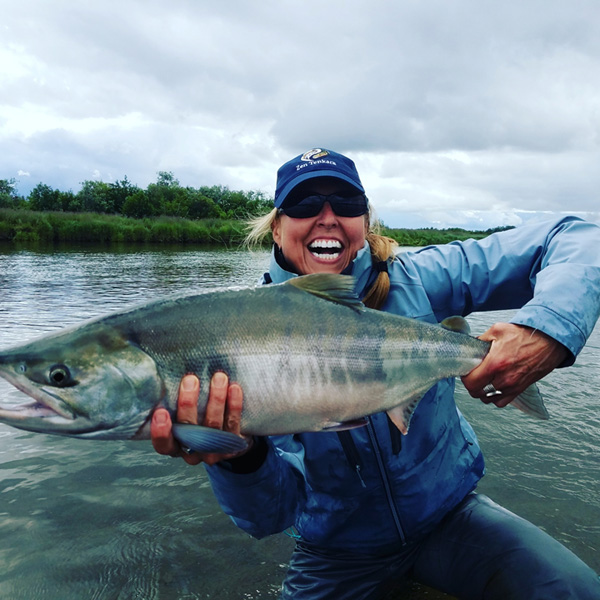
As an experiment on the 7th day of our 8 days of fishing. I hooked into a Chum weighting in at least at 17lbs. The guides were both downstream helping to land other fish. I figured it was an opportunity to try to land the thing myself since, worst case scenario, I’d lose it anyway. I did everything the same working to maintain the arch and every time I felt the fish about to run, I’d lay my rod over to the opposite side and steer him in a different direction, all the while, slowly but surely, walking back towards shallower water where I had more personal control and could maneuver easier. When I finally felt a pause, I quickly grabbed the line (there was about 28-30ft plus about 9ft of leader), let go of my rod and started taking up line by hand. Each time I felt the fish start to panic, I’d release some line and let him calm. It took only a few times of doing this and letting out only a few feet each time, when I realized the fish was right there in front of me. I was able to retrieve the hook and after a little reviving (which as a practice, I always do), he was let go and I was beaming. To land something like that by hand-lining with no net, well, it was one of the proudest, most exhilarating moments in my life. The fish fought but not to exhaustion. He was healthy, solid and swam off strong.
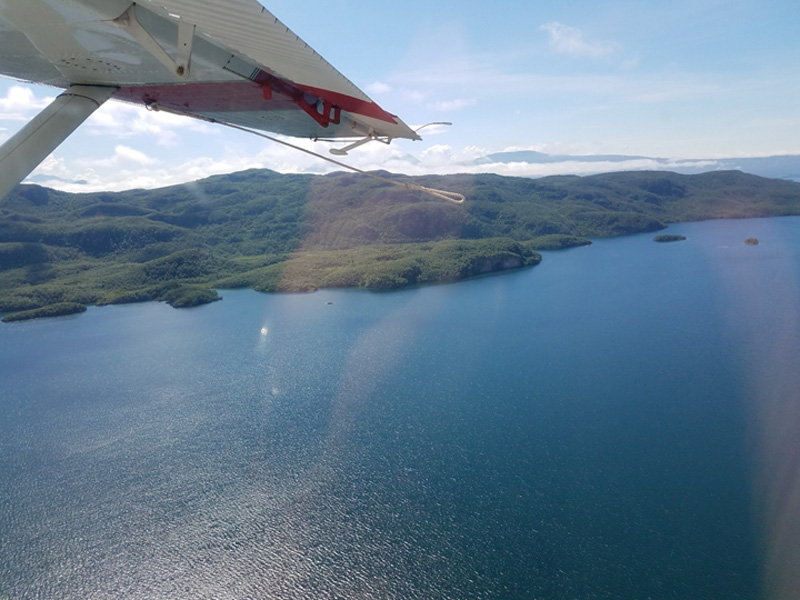
According to all the Rapid Camp Lodge guides, the tenkara adventure was “the most fun they ever had guiding.” They became swift and proficient at netting mammoth salmon. They learned how to shorten the radius of the line from rod tip to hooked fish, in order to quicken and ease the landing and netting process. Even more critically, they were problem solvers, being experts at guiding Alaskan waters and now understanding the challenges a set line distances can present, they were adventurous and creative anglers willing to brainstorm set-ups and varying line types and lengths to hit the mark. Their willingness to be innovative and have fun was matched only by my own passion and desire to play, push limits and always welcome a challenge, as an opportunity to learn something about tenkara, my rods and myself.
